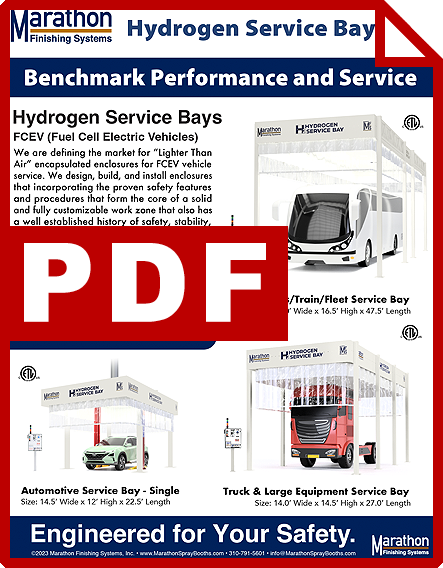Hydrogen fuel cell cars are taking hold in California, and it is likely that they will spread across the nation. These vehicles are pollution-free and offer terrific benefits for consumers. According to the California Fuel Cell Partnership, there were 4,926 hydrogen fuel cell cars in California as of July 1, 2018. There were 35 hydrogen fuel cell stations at that time, and 29 more stations were in development. As an increasing number of people buy these cars, it is vital for mechanics and dealerships to be prepared for hydrogen fuel cell cars automotive repair. These vehicles require that mechanics follow specific steps for repairs so that they will be safe.
How Does the Hydrogen Fuel Cell Cars Automotive Repair Process Work?
To understand the repair process for hydrogen fuel cell cars, it is important for you to understand how the cars are powered. These cars have stacks of fuel cells that contain hydrogen. Instead of burning the hydrogen for fuel, the cells chemically fuse the hydrogen molecules with oxygen from the air. This process produces electricity, which then is used to power the motors. The only byproduct that is produced is water, making these cars pollution-free.
Hydrogen is very flammable and can also cause electric shocks if it comes into contact with a source of electricity. This makes it important for you to have protections in place for the mechanics who will work on hydrogen fuel cell cars. Unlike petroleum products that are heavier than air and pool on the ground, hydrogen is a lighter-than-air fuel that rises upward. If you have bays with openings at the top, the hydrogen fuel may escape elsewhere into your shop and pose risks to others. If the hydrogen comes into contact with lights, it can explode or cause fires, making it important for you to have a way to contain it.
Servicing Hydrogen Fuel Cell Cars
Before you can service a hydrogen fuel cell car, you must first drain all of the hydrogen out of the fuel cell stack. The National Fire Protection Association has released guidelines for the handling of hydrogen fuel so that people who work with or around it remain safe. After the hydrogen fuel has been removed from the cell stack, the stack has to be neutralized with helium. Once the cell stack is neutralized, the mechanics may complete the service.
Because of the potential risks of electric shock and fires, it is important for shops to have protected and dedicated hydrogen fuel service bays installed. Marathon’s H2 Service Bays adhere to all of the standards as outlined by the National Fire Protection Association and are enclosed so that hydrogen cannot escape from the top or come into contact with lights that could cause the hydrogen to ignite.
The needs of servicing these cars are highly specific, making it important for mechanic shops and dealerships to add hydrogen fuel cell service bays. Having these specialized bays can increase worker safety while also reducing the chance of fires. If you have these bays installed in your mechanic shop or dealership, you can also be prepared to service one of these vehicles when a customer needs help. If you are located in California, it is especially important for you to be able to have the capabilities of servicing fuel cell vehicles. Having these bays can help you to expand your customer base and stand out from your competitors so that you can enjoy robust future sales and an excellent return on your investment.
Contact Marathon Today For A Free Quote
As more and more people are looking for ways to reduce their environmental footprints, the popularity of hydrogen fuel cell cars will only increase. It is likely that these cars will become popular and spread across the U.S., making it important for dealerships and mechanics everywhere to be prepared by installing these specialized hydrogen fuel bays. Call Marathon today for a free quote at (310) 791-5601.

